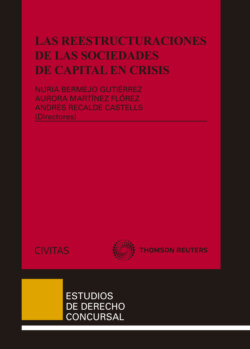Читать книгу Las reestructuraciones de las sociedades de capital en crisis - Aurora Martínez Flórez - Страница 62
На сайте Литреса книга снята с продажи.
II. THE ISSUE OF SHAREHOLDERS’ POSITION IN INSOLVENCY PROCEEDINGS BEFORE THE RECENT REFORMS
ОглавлениеThe analysis of the above-mentioned issue presupposes, preliminarily, a brief description of shareholders position in insolvency procedures before the recent reforms.
In German Insolvenzverfahren, as in the same procedures provided by other European legal system, shareholders lose, as a rule, the economic value of their investment in equity simply because debtor’s estate is not enough to satisfy creditors, whose claims have a higher rank of the ones of equity holders. By contrast, equity holders kept, before the latest legal reform by ESUG, a relevant influence –sub specie of voting rights– on the decisions regarding the company and its organisation.
This effect arose from the traditional principle of organizational neutrality of the insolvency procedures6): these ones would have only company assets as their item, not the company as a legal entity and its organisation (including equity holders’ shares)7).
As a consequence, changes in the internal structure of the company that are usually required in the restructuring process –such as the operations on capital as well as the debt-equity-swap– could not be achieved without shareholders' votes8), because they did not take part in the Insolvenzplanverfharen 9) or in similar foreign insolvency proceedings (concordato preventivo in Italy, convenio in Spain)10).
Such a situation was perceived as particularly sensitive for various reasons, which can be summarized as follows:
i) the implementation of a restructuring plan requires, as a rule, the adoption of decisions concerning the corporate structure and the company organisation, particularly its capital11);
ii) as a result, shareholders kept a veto power (Blockademacht) in restructuring proceedings that could be used unfairly at the expense of creditors12);
iii) equity holders could take advantage from the sacrifices accepted by creditors within restructuring plan, enjoying, without having contributed in any way, the positive effects –think, for example, about the reacquisition of value of their investment in the company– resulting from the success of the reorganization,13).
Therefore, the existing regulatory system before ESUG-reform resulted in the existence of serious Konfliktsituation among creditors and shareholders14).
